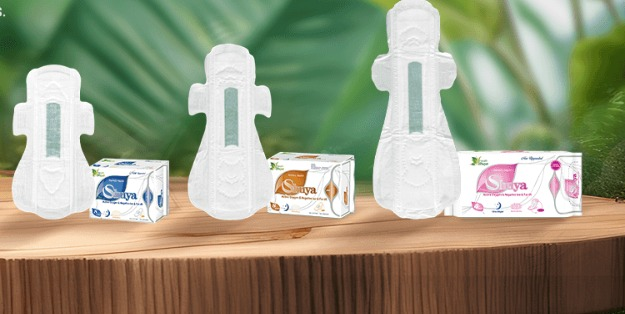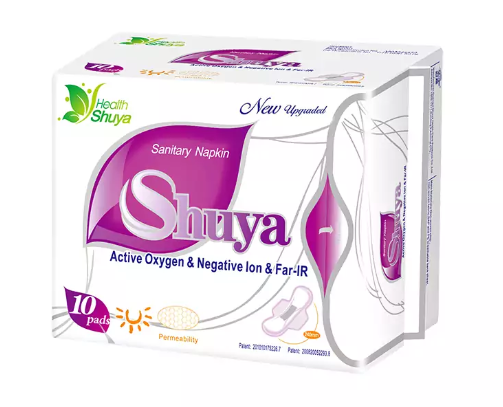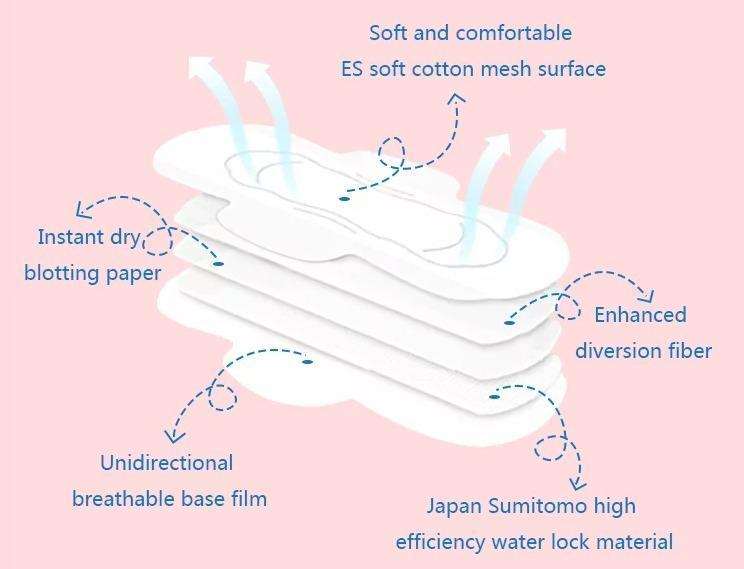Manufacturing sanitary pads to ISO9001 standards is key to menstrual hygiene. The accreditation ensures industrial processes satisfy national and international uniformity and safety standards. To avoid contamination, high-quality pads must be made in hygienic conditions. Plus, the types of sanitary pads must be given according to different demands for absorbency, comfort, and skin compatibility. Women’s health relies on purchasing pads from manufacturers that fit these needs. In this guide, we will uncover types of sanitary pads for menstrual hygiene.

Role of Sanitary Pads in Menstrual Hygiene
What are sanitary pads? They control fluids and pH to avoid bacterial infections and skin irritation during menstruation. Different types of sanitary pads use SAPs and breathable fabrics for comfort and leak prevention. Also, pads with wings improve adherence and security for lower-side leakage. Odor-neutralizing and moisture-wicking layers promote user satisfaction with sanitary pads.
Common Types of Sanitary Pads
1. Regular Sanitary Napkin (Day Use)
Daytime sanitary napkins can manage 20 to 50ml of menstrual flow. Shuya International Anion Daily Sanitary Pads can absorb 100ml of liquid. These multilayer pads have a soft, nonwoven top sheet and a moisture-locking SAP core. They also include wings to avert side leaking and sticky strips to fasten them. A breathable back sheet can also render regular sanitary napkins softer and decrease skin irritation. These types of sanitary pads are meant for daytime use.

2. Panty Liner (Small Volume)
Panty liners are destined for daily discharge of less than 5 ml. They are thinner than ordinary sanitary napkins and have a single-layer absorbent core without superabsorbent polymers. Panty liners have nonwoven fabric and may include a waterproof back sheet to prevent leakage. They are discreet and comfy for daily usage at the start or end of a menstrual cycle or for freshness. Remember, such types of sanitary pads with panty liners are lightweight and flexible.
3. Super Long Liner (Night Use)
Nighttime super long liners handle strong menstrual flow, often 50- 80 ml. They are longer and broader at the back for optimal covering and leakage avoidance while sleeping. A highly absorbent core with SAPs and channels that transfer fluid uniformly are among their layers. The liners’ breathable, waterproof back cover adds comfort and inhibits heat accumulation. For undisturbed, leak-free sleep during high-flow nights, very long liners are key among the types of sanitary pads.
Anion Sanitary Napkin Benefits
A remarkable improvement among the types of sanitary pads is that anion sanitary napkins utilize negative ion technology to combat bacterial growth and odor. Such napkins have an anion strip, which produces negative ions (anions). These ions, generated when moisture touches, make microorganisms unwelcome for greater cleanliness. Clinical investigations show that the anion strip lowers Staphylococcus aureus. Henceforth, users experience fewer infection risks and better menstrual comfort.

FAQs
1. Can Sanitary Pads Cause Rash?
Yes, sanitary pads may cause rashes from friction, moisture retention, and allergies. Pad-skin friction during movement may irritate the skin. In addition, the pad’s superabsorbent polymers and synthetic fibers retain moisture for bacterial and fungal development. Pad perfumes, dyes, and adhesives may cause contact dermatitis in some women. Therefore, hypoallergenic pads with greater breathability and fewer chemical additives should be considered to avoid dangers.
2. Are Sanitary Pads Compostable?
Polyethylene back sheets and SAPs may render most sanitary pads non-compostable. However, some manufacturers are making eco-friendly pads from organic cotton and biodegradable bioplastics. For example, polylactic acid pads manufactured from corn starch are biodegradable. Nonetheless, proper composting conditions, including industrial composting facilities, must fully break down these materials. Composting must also handle menstrual blood pathogen health issues.
3. Do Sanitary Pads Expire?
Sanitary pads expire because their absorbent ingredients and adhesives degrade. Keeping pads cool and dry could maintain them effectively for up to five years. The absorbent core, including cellulose fluff pulp and superabsorbent polymers, might decrease fluid retention with time. Additionally, attachment adhesives might dry up or become less sticky for lower pad usefulness. Correct storage may extend shelf life, but check for degradation before use.
Conclusion
As there are types of sanitary pads on the market, it is essential to find a reliable sanitary pad supplier. Shuya’s OEM sanitary pad manufacturing includes cutting-edge technology like anion strips, which limit bacterial development. Our automated high-speed production facilities and tight quality control guarantee uniformity across many types of sanitary pads. Shuya also utilizes SAP technology to increase fluid retention and permeable back sheets to decrease discomfort. It also follows ISO 9001 and FDA registration criteria for product quality and safety. Explore more at our site.

